5-METHYLCHRYSENE
- CAS NO.:3697-24-3
- Empirical Formula: C19H14
- Molecular Weight: 242.31
- MDL number: MFCD00215919
- SAFETY DATA SHEET (SDS)
- Update Date: 2024-12-18 14:15:32
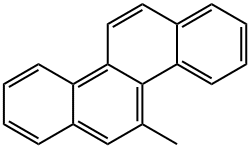
What is 5-METHYLCHRYSENE?
Chemical properties
Three of the listed PAHs (dibenz[a,h]acridine, dibenz[a,j]acridine, and 7H-dibenzo[c,g]carbazole) contain a nitrogen atom as part of a ring and therefore are classified as heterocyclic PAHs. The PAHs can exist as leaflets, plates, needles, or at room temperature and range in color from colorless to yellow, green or blue. All PAHs are soluble in water and slightly soluble in ethanol, acetone or acid; most are soluble in benzene. Physical and chemical properties of the 15 PAHs are listed in the table below. In addition to the properties listed in the table, benzo[a]pyrene has a specific gravity of 1.351 and a vapor density relative to air of 8.7, and dibenzo[a,h]anthracene has a specific gravity of 1.282 (HSDB 2009).
The Uses of 5-METHYLCHRYSENE
5-Methylchrysene is one of the methylated chrysenes (MeChry), as an aryl hydrocarbon receptor (AhR) agonist. Methylated chrysenes (MeChry) are important cigarette smoke constituents and 5-MeChry has been listed as possibly carcinogenic to humans. 5-Methylchrysene is a possible carcinogenic agent.
The Uses of 5-METHYLCHRYSENE
IARC (1983) reported that no commercial uses or applications were known for dibenzo[a,h]pyrene, dibenzo[a,i]pyrene, and 5-methylchrysene. The remaining twelve listed PAHs are used only in biochemical, biomedical, laboratory, or cancer research (HSDB 2009). At least five of the listed PAHs are present in coal tar, which is used as a fuel in the steel industry in open-hearth and blast furnaces (HSDB 2009). Coal tar is also used in the clinical treatment of skin disorders such as eczema, dermatitis, and psoriasis. Coal tar is distilled to produce a variety of products, including coal-tar pitch and creosote. At least two of the listed PAHs are present in coal-tar pitch, which is used primarily as a binder for aluminum smelting electrodes in the aluminum reduction process. Coal-tar pitch is also used in roofing, in surface coatings, for pitch-coke production, and for a variety of other applications (IARC 1985). At least two of the listed PAHs are found in creosote, which is used to preserve railroad ties, marine pilings, and telephone poles. Some creosote is used for fuel by steel producers (NIOSH 1977). At least three of the listed PAHs are present in bitumens and asphalt, which are used for paving roads, sound- and water-proofing, and coating pipes.
What are the applications of Application
5-Methylchrysene is a methylated chrysene that acts as an Aryl Hydrocarbon Receptor (AhR) activator
Definition
ChEBI: 5-Methylchrysene is a carbopolycyclic compound.
General Description
Purple crystals. Water insoluble.
Air & Water Reactions
Dust/air mixture may ignite and explode. Insoluble in water.
Reactivity Profile
Vigorous reactions, sometimes amounting to explosions, can result from the contact between aromatic hydrocarbons, such as 5-METHYLCHRYSENE, and strong oxidizing agents. They can react exothermically with bases and with diazo compounds. Substitution at the benzene nucleus occurs by halogenation (acid catalyst), nitration, sulfonation, and the Friedel-Crafts reaction.
Safety Profile
Confirmed carcinogen with experimental carcinogenic, neoplastigenic, and tumorigenic data. Mutation data reported. When heated to decomposition it emits acrid smoke and irritating fumes.
Carcinogenicity
The 15 individual PAHs are reasonably anticipated to be human carcinogens based on sufficient evidence of carcinogenicity from studies in experimental animals.
Properties of 5-METHYLCHRYSENE
| Melting point: | 118.3°C |
| Boiling point: | 465.14°C (rough estimate) |
| Density | 1.1011 (estimate) |
| refractive index | 1.7480 (estimate) |
| storage temp. | 2-8°C |
| solubility | Chloroform: Soluble; Methanol: Soluble |
| form | A crystalline solid |
| Water Solubility | 62ug/L(27 ºC) |
| IARC | 2B (Vol. Sup 7, 92) 2010 |
| EPA Substance Registry System | 5-Methylchrysene (3697-24-3) |
Safety information for 5-METHYLCHRYSENE
| Signal word | Danger |
| Pictogram(s) |
 Health Hazard GHS08 |
| GHS Hazard Statements |
H350:Carcinogenicity |
| Precautionary Statement Codes |
P201:Obtain special instructions before use. P202:Do not handle until all safety precautions have been read and understood. P281:Use personal protective equipment as required. P308+P313:IF exposed or concerned: Get medical advice/attention. P405:Store locked up. P501:Dispose of contents/container to..… |
Computed Descriptors for 5-METHYLCHRYSENE
New Products
4-Fluorophenylacetic acid 4-Methylphenylacetic acid N-Boc-D-alaninol N-BOC-D/L-ALANINOL Tert-butyl bis(2-chloroethyl)carbamate 3-Morpholino-1-(4-nitrophenyl)-5,6-dihydropyridin- 2(1H)-one Furan-2,5-Dicarboxylic Acid Tropic acid S-2-CHLORO PROPIONIC ACID ETHYL ISOCYANOACETATE 2-Bromo-1,3-Bis(Dimethylamino)Trimethinium Hexafluorophosphate (6-METHYL-[1,3]DITHIOLO[4,5-b]QUINOXALIN-2-ONE INDAZOLE-3-CARBOXYLIC ACID 4-IODO BENZOIC ACID (2-Hydroxyphenyl)acetonitrile 4-Bromopyrazole 5,6-Dimethoxyindanone 2-(Cyanocyclohexyl)acetic acid 4-methoxy-3,5-dinitropyridine 2-aminopropyl benzoate hydrochloride 1-(4-(aminomethyl)benzyl)urea hydrochloride diethyl 2-(2-((tertbutoxycarbonyl)amino) ethyl)malonate tert-butyl 4- (ureidomethyl)benzylcarbamate Ethyl-2-chloro((4-methoxyphenyl)hydrazono)acetateRelated products of tetrahydrofuran
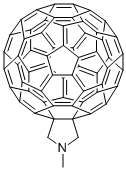
![DIINDENO[4,3,2,1-CDEF:1',2',3'-HI]CHRYSENE](https://img.chemicalbook.in/CAS/GIF/169331-76-4.gif)
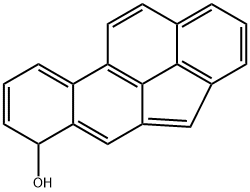

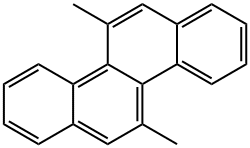
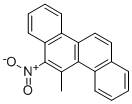
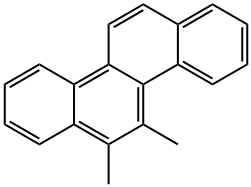
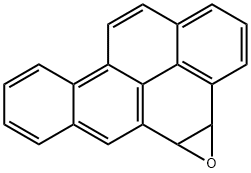
You may like
-
 2033-24-1 98%View Details
2033-24-1 98%View Details
2033-24-1 -
 42831-50-5 5-METHYLISOXAZOLE-4-CARBOXYLIC ACID 98%View Details
42831-50-5 5-METHYLISOXAZOLE-4-CARBOXYLIC ACID 98%View Details
42831-50-5 -
 1975-50-4 98%View Details
1975-50-4 98%View Details
1975-50-4 -
 2-HYDROXY BENZYL ALCOHOL 98%View Details
2-HYDROXY BENZYL ALCOHOL 98%View Details
90-01-7 -
 2-Chloro-1,3-Bis(Dimethylamino)Trimethinium Hexafluorophosphate 221615-75-4 98%View Details
2-Chloro-1,3-Bis(Dimethylamino)Trimethinium Hexafluorophosphate 221615-75-4 98%View Details
221615-75-4 -
 61397-56-6 CIS BROMO BENZOATE 98%View Details
61397-56-6 CIS BROMO BENZOATE 98%View Details
61397-56-6 -
 14714-50-2 (2-Hydroxyphenyl)acetonitrile 98+View Details
14714-50-2 (2-Hydroxyphenyl)acetonitrile 98+View Details
14714-50-2 -
 118753-70-1 98+View Details
118753-70-1 98+View Details
118753-70-1